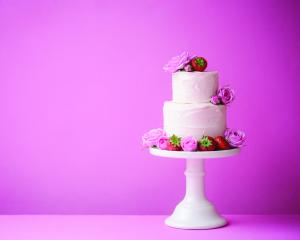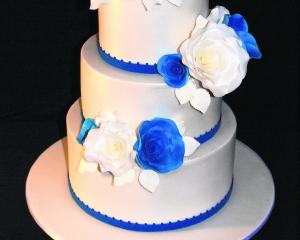Once you’ve scanned countless photos of mouthwatering cakes and daydreamed over passionfruit buttercream, red velvet and choc-cherry flavours, it is time to get down to business with your baker.

Generally, three tiers will serve 50 to 100 guests; you’ll likely need five layers for 200 guests or more. Different types of cake will garner different serving amounts. For example, a mud cake would generally be served in larger portions than a fruitcake.
Your baker will be able to give you a better indication of servings when discussing the size, shape and type of cake you’d like.
You will also need to decide if you will be following tradition and saving the top tier of your cake. If so don’t include it in your calculations.
One way to save on the cost of an elaborate cake, is to order a small cake, decorated to perfection, and a sheet cake of the same flavour to actually feed the guests. Or, if you are having a dessert table, or another sweet addition to the cake, consider a cake sized for half your guests.
It is also important to make sure you tell whoever will be cutting your cake how many guests it is expected to feed and what size slices you’d like served to ensure you don’t run out, and what to do with any leftovers.

Did you know?
The traditional stacked cake, as we now know it, originated at the wedding of Prince Leopold, Duke of Albany, in 1882.
 Catherine's Cakes
Catherine's Cakes

To freeze or not to freeze
Consider enjoying the top tier with your spouse the day after the wedding, or save it for the two-week or one-month anniversary.
You could treat yourself to a fresh cake in the same flavour for your one-year anniversary or baby’s christening.
If you must adhere to tradition, the best type of cake to freeze is fruitcake. Wrap it well in plastic wrap, then foil, then place in an airtight plastic container to freeze. Allow the cake to slowly thaw in the fridge for a few days before eating.












